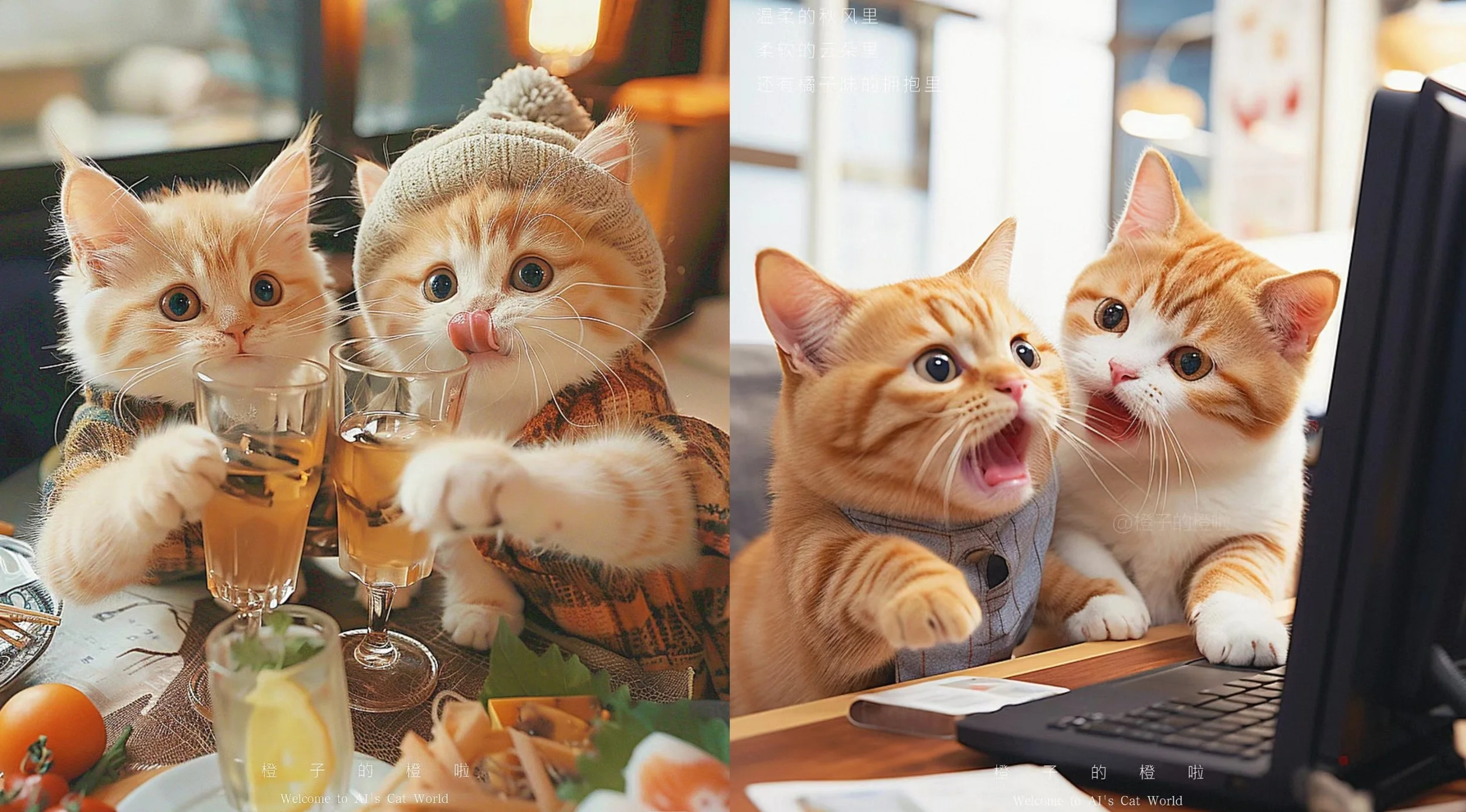Ancient remedies for modern pets: the rise of TCM in China’s pet boom

In recent years, China has witnessed a significant convergence between two burgeoning trends: the resurgence of Traditional Chinese Medicine (TCM) and the rapid increase in pet ownership. This intersection has given rise to a novel sector - pet-focused TCM services and products - reflecting evolving consumer preferences and a deepening bond between owners and their animal companions.
The Resurgence of Traditional Chinese Medicine
TCM, with its millennia-old practices, has seen a revival in modern China. This renewed interest is driven by a growing emphasis on holistic health and wellness among Chinese consumers. Contemporary wellness trends have expanded beyond traditional herbal remedies and consultations, integrating TCM principles into various aspects of daily life. For instance, the emergence of Chinese herbal bread combines medicinal ingredients with Western baking techniques, catering to health-conscious individuals seeking to alleviate "health anxiety."
The Rise of Pet Ownership in China
Parallel to the TCM resurgence is the booming pet economy. As of 2023, China's urban households are home to over 120 million cats and dogs, reflecting a significant increase in pet ownership. This trend is driven by factors such as rising living standards and changing perceptions of pets as companions, with Gen-Zers and Millennials accounting for a significant portion of this demographic. These younger pet owners often view their pets as family members, leading to increased spending on pet care, nutrition, and wellness products.
This trend is further evidenced by the growing popularity of pet-related events and services, such as Lunar New Year dinners tailored specifically for dogs, highlighting the deepening integration of pets into familial and cultural traditions.
The Convergence: TCM for Pets
The intersection of these trends has led to the emergence of TCM applications in pet care. Pet owners are increasingly seeking holistic and natural treatments for their animals, turning to TCM practices like acupuncture, herbal remedies, and dietary therapies. This approach aligns with the broader wellness movement, emphasizing preventive care and overall well-being.
In urban centers, specialized pet clinics now offer TCM services, catering to owners looking for alternative or complementary treatments to conventional veterinary medicine. These services are particularly sought after for chronic conditions, pain management, and enhancing the quality of life for aging pets.
Market Implications and Future Prospects
The fusion of TCM and pet care presents significant opportunities for businesses and entrepreneurs. The pet care market in China has surged, growing by almost 40% since 2020 to a value of ¥94.6 billion ($13.1 billion).
As pets are increasingly seen as family members, owners are more willing to invest in premium care options, including TCM treatments.
However, challenges remain. The efficacy of TCM treatments for animals requires further scientific validation, and there is a need for standardized practices and trained professionals in the field. Additionally, consumer education is crucial to ensure that pet owners make informed decisions regarding TCM therapies.
In conclusion, the convergence of Traditional Chinese Medicine and the rising pet ownership in China reflects broader societal shifts towards holistic health and the deepening human-animal bond. As this niche sector develops, it offers promising avenues for innovation in pet care, blending ancient practices with modern demands.
Instead of chasing scale through aggressive franchising or racing to the bottom with price wars, Honeymoon and Ah-Ma Handmade are playing the long game: building brands rooted in culture, craftsmanship, and emotional connection
From its roots in TCM to the playful emergence of Poop Map, China’s evolving attitude toward bowel health demonstrates an openness to blending ancient wisdom with modern tech-savvy trends
The record-breaking triumph of Ne Zha 2 confirms that compelling storytelling, rooted in Chinese culture and reflective of current societal sentiment, can profoundly influence consumer behaviour.
Two of China's fastest growing categories - pets and TCM - are converging, creating a booming niche category that provides hints for other convergence opportunities in China
A concise summary of last month's key marketing developments in China, highlighting valuable insights and their implications for brands.
China’s most famous vlogger is back after 3 years! What does her popularity say about Chinese culture?
Following the robotic dogs, CASIO's latest innovation, the AI pet Moflin, is broadening horizons of what these pets can be. Beyond AI pet healthcare and smart supplies, AI is spawning exciting product placement opportunities related to pets.
During this year’s National Day holiday, China saw 765 million domestic trips and ¥700.8 billion ($99b) in spending. As travellers seek deeper cultural connections, “Neo-Chinese night tours” emerged as popular experiences, presenting new growth opportunities for the tourism industry.
Just like us, pets need to beat the heat during the sweltering summer months. From stylish cooling mats and pads, to ice collars and breezy apparel, a wave of functional and fashionable products has been heating up China's pet supplies market, creating promising seasonal opportunities.
Chinese youth have embraced Jellycats, stones, even mango seeds as another kind of ‘pets.‘ These alternatives provide emotional value without the time-consuming and attentive pet-caring routines.
The Chinese-style wellness trend has created new business opportunities by combining traditional Chinese medicine with milk tea, dining, offline fairs, and AI. There are also suggestions for brands’ marketing you can’t miss…
Today, Chinese youth are enthusiastically exploring local museums. Brands are tapping into this trend by launching museum IP collabs. Check out the interesting McDonald’s case...
Chinese fresh food O2O platform Dingdong Maicai has become a cyber ‘flower, bird and fish market’ in addition to offering regular fresh food to expand business scope and attract young customers. You can find many ‘whacky‘ things there…
Despite the interesting name, horse-face skirts have been some of the fastest growing fashion items in China this year
Pet chickens are just one example of lifestyle decisions that youth are making as they become more aware of their mental states
China’s Year of the Dragon is its most auspicious and 2024’s zodiac brings many new trends and opportunities for brands
China’s big retailers including Sam’s Club, Costco and Hema are selling more innovative CNY packaging than ever, but the highlight are pet CNY gift packs aligned to the pet equality culture
Controversy surrounding Apple’s Chinese NY case highlights the importance of triple-checking Chinese cultural elements, particularly for foreign brands
Pet strategies in China are now taking hold at a more grassroots level, and spanning categories from health to retail
U.S. studios' share of box office continues to shrink, which may contribute to nationalism in both China and the West
2003 was the year that China surpassed the EU for greenhouse emissions. By 2019, emissions from China were more than four times that of the EU’s 27 member states combined, and over 30% more per capita. In 2019 China accounted for 27% of global emissions, exceeding the entire emissions from the Developed World for the first time.
Skinny readers who’ve been with us for a while may remember when we hypothesised how retailers would be able to tap into China’s facial recognition with consumer scenarios in 2019 and beyond. The anticipated opportunities were the result of China’s leadership in facial recognition tech, coupled with its liberal policies and consumer attitudes towards the privacy. While cities such as San Francisco and Portland have banned the use of facial recognition, the technology has flourished in China with numerous marketing applications. Unfortunately many have been unscrupulous.
Happy 2021. With China being the only major country to grow its GDP in 2020, economists the world over have been dialling up their forecasts of China's relative might in the years ahead. The Chinese economy is now expected to be larger than the US by 2028, presenting enormous opportunities for everything from milk to Maseratis.
Pets were denounced as bourgeois vanity by Chairman Mao which saw China late to the game of keeping pets as companions. But this has changed in recent years, driven by political, economic, societal and technological drivers, and accelerated by Covid. Now more than 500 million pet lovers embrace them online. The infographic below provides some of the more interesting data points about China’s online pet group of more than 500 million who now adore our canine and feline friends…
Many execs from the world’s luxury brands are likely to be toasting the resilient Chinese consumers who are the bright spot in otherwise abysmal sales. As LMVH’s global sales contracted 38% between April to June, consumers in China shelled out 65% more on their fashion and leather goods than a year earlier. Similarly, Kering’s worldwide revenue declined 29%, whereas sales in China grew 40%. Tiffany’s China sales were up 90% in May from 2019 while they fell 45% in the US in the first half of the year. The list goes on…
One of the groovy innovations we spotted at the Taobao Maker Festival last month was from Wu Qiuqiao, the Hunan-based cat hanfu designer. Who is the cat hanfu designer?
The coronavirus is likely to change the face of retail the world over. Brick & mortar retailers have taken the double-hit of falling consumer spending, and a pivot to ecommerce as consumers seek to minimise their risk of infection in public spaces.
Last week was a big week for dogs in China: China’s agriculture ministry released a draft classifying them as pets not livestock. The announcement follows February’s nationwide ban on the trade and consumption of wildlife in China following widespread suspicions that that the COVID-19 outbreak stemmed from the virus being transmitted from wild animals to humans.
China's successful MollyBox subscription service for pets teaches us wider lessons about successful D2C and subscription services in China.





























Chinese traditional wellness practices such as sand therapy, Sanfu moxibustion, and herbal or botanical beverages are trending this summer. Chinese consumers are increasingly drawn to health regimens rooted in ancient wisdom.